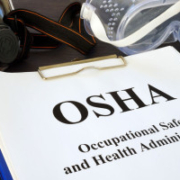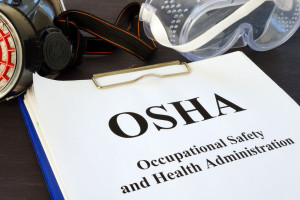Do you like to make New Year’s resolutions? Studies show that most Americans make an average of three to five goals each January. The problem: Most resolutions are cast aside by the end of February.
What would happen if you picked just one resolution — one important business goal — and stuck to it for an entire year? A goal that’s challenging and, if you work hard, attainable? Research shows that instead of coming up with multiple goals for 2021, pledging to make one significant change is more likely to result in success. And make it specific. Instead of a New Year’s resolution to “attend more networking events,” quantify the number of networking events you’ll attend each month and what you plan to accomplish at each. Instead of “growing your business,” quantify how much you plan to grow your sales or profits.
One time-tested method for setting effective goals is called the SMART principle. SMART stands for specific, measurable, achievable, relevant and time-bound. Using the SMART approach, quality goals can be created by asking yourself these five questions:
- Is your goal specific enough? You’ll be more motivated to work hard to attain a goal if you spell out exactly what should be accomplished. Instead of a vague goal of increasing traffic to your company’s website, for example, you would want to set a specific goal in terms of unique visitors or page views.
- Is your goal measurable? Make sure you can monitor your progress and ultimately measure whether you have accomplished what you set out to.
- Is your goal achievable? You don’t want to create goals that are too easy to reach but you don’t want to set yourself up for failure, either.
- Is your goal relevant? If you accomplish your goal, will it further your personal and/or business objections or mission?
- Does your goal have a timeline? Having a deadline can be motivating and give you an exact date in the future to work toward. Otherwise, you might not feel the urgency to put in the required effort.
Research also shows that sharing your resolution with others can make a big difference. Let others know about your goal early in the year.









 Whether it involves rain or snow on an outdoor walkway or a wet office floor, falls are one of the leading types of workplace accidents across a wide range of industries. And they can cause serious and even life-threatening injuries.
Whether it involves rain or snow on an outdoor walkway or a wet office floor, falls are one of the leading types of workplace accidents across a wide range of industries. And they can cause serious and even life-threatening injuries.
 Is data security, online privacy and identity theft a top concern for your business? If it’s not, it should be. Cybercrime is on the rise. More than ever, hackers are successfully stealing information from organizations and using it to commit identity theft and fraud.
Is data security, online privacy and identity theft a top concern for your business? If it’s not, it should be. Cybercrime is on the rise. More than ever, hackers are successfully stealing information from organizations and using it to commit identity theft and fraud.
 In a day and age where we can connect online and in-person with virtually anyone, the possibilities to connect with other people are endless. Are you effectively growing and leveraging your business network? Here are five great ways to make meaningful connections and to use networking as a business development tool:
In a day and age where we can connect online and in-person with virtually anyone, the possibilities to connect with other people are endless. Are you effectively growing and leveraging your business network? Here are five great ways to make meaningful connections and to use networking as a business development tool:
 Wildfire season is here once again. And after last year’s devastating fires in California and throughout the West, many experts worry that continued drought conditions will lead to another year of heightened risk and high levels of destruction.
Wildfire season is here once again. And after last year’s devastating fires in California and throughout the West, many experts worry that continued drought conditions will lead to another year of heightened risk and high levels of destruction.